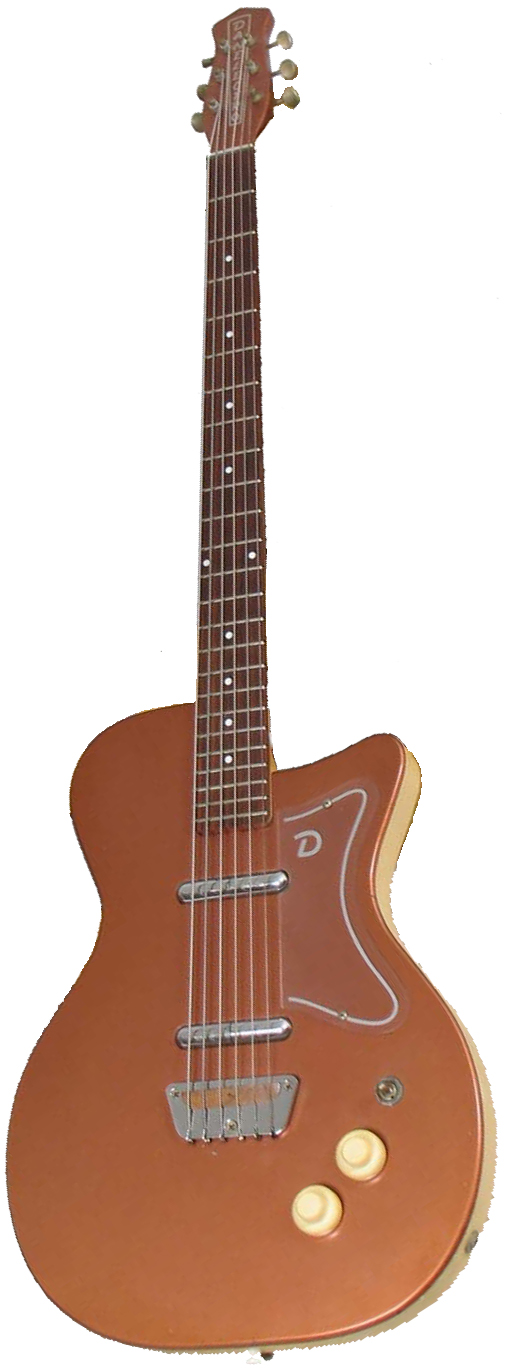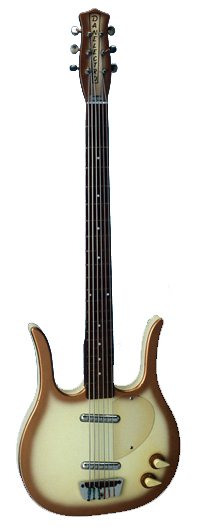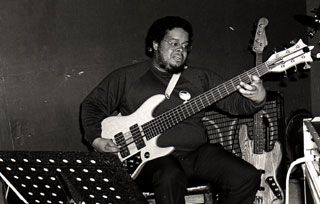5 and 6-string basses
It is probably unknown to many that the first 6-string bass was actually produced in 1956 by Danelectro with the UB-1, UB-2 and, since 1958, Long Horn Model, all with a short scale of 29.5’’ and, first in history, with 24 keys; followed by Gibson in 1959 with the EB-6 (20 frets, 30.5’’ scale, semi-acoustic) and then by Fender in 1961 with the famous Bass VI with 30’’ scale and 21 frets. Rather than as electric basses these instruments have been identified as baritone guitars, even if in all respects they were instead real bass guitars (six-string bass), in fact the tuning was like that of the guitar but translated one octave below (from the VI string: E0, A0, D1, G1, B1, E2).
These bizarre instruments were used in the late fifties and during all of the sixties especially in country music, rock and roll and pop, to double up, thus strengthening the rhythmic section, the line of the double bass or electric bass in a mode called ‘tic-tac bass’, but also as a real bass in pop rock music, on La Bamba for example (with the legendary studio session player Carol Kaye at Danelectro six string) or in some hits of the Beach Boys, up to the Jack Bruce of the early Cream and the bass line of Let It Be, performed by John Lennon (as it can be seen in the related documentary) while Paul McCartney was on the piano.
The origin of the 5 strings dates back to 1965 with the Fender Bass V which, produced for 5 years without particular luck, mounted an additional high C, thus extending the high register, on a neck with 15 frets and with a regular scale of 34’’.

DANELECTRO UB-2

DANELECTRO LONG HORN
The first experiments that led to the current 6-string started in 1974 when the talented session player Anthony Jackson went to the New York luthier Carl Thompson with the idea of the 6-string bass, not as a bass/baritone guitar, but just like an electric bass, tuned for fourths, adding a low B and a high C to the traditional 4 E-A-D-G strings.
The result was a series of prototypes which, however, did not convince Jackson, above all because of the small distance between the strings (string spacing).
It was only in 1984 that Jackson was fully satisfied when the Smith-Fodera duo built for him what he called ‘The Contrabass Guitar’, a classic 6-string as we know it, with a wide enough neck to allow a distance of the strings sufficiently similar to that of a Fender bass.

ANTHONY JACKSON WITH THE CONTRABASS GUITAR SMITH/FODERA
The first 5-strings, as it is modernly understood, therefore containing the low B, was born in 1976 from the collaboration between Alembic and Jimmy Johnson, another very talented American session player, who played bass for example for James Taylor. It is an important moment, the 5-strings with the low B will prove to be a practical instrument for low frequency workers and will have a remarkable and constant success from the second half of the eighties onwards.
Come abbiamo visto nella sezione dedicata all’alta liuteria i marchi che più si sono distinti nella produzione di 5 e 6 corde sono stati Smith, Fodera, Tobias, Pedulla.



